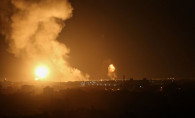The Legal Error in the United Nations Security Council in its Resolution 242 of 1967
The Origin of the Misunderstanding of the Israel's Boundaries before the 1967 War as Legal
The origin of recognizing Israel's boundaries before the 1967 Second Arab - Israel War as legal, in fact is originated from United Nations Security Council (UNSC) Resolution 242 of 22 November 1967. A little mistake, using a wrong word in the UNSC Resolution 242 lead to the misconception of accepting Israel`s boundaries as legal.
The UNSC Resolution 242 wrongly asked Israel to withdraw only from the territories it had occupied during the recent conflict. In paragraph 2 of the preamble of the UNSC resolution 242, it is written that:
“Emphasizing the inadmissibility of the acquisition of territory by war and the need to work for a just and lasting peace in which every State in the area can live in security.”
In paragraph 3 of the preamble of the UNSC resolution 242, it is written that:
“Emphasizing farther that all Member States in their acceptance of the Charter of the United Nations have undertaken a commitment to act in accordance with Article 2 of the Charter,”
In the operative paragraph 1 of the UNSC resolution 242, it is written that:
“1. Affirms that the fulfilment of Charter principles requires the establishment of a just and lasting peace in the Middle East which should include the application of both the following principles:
- Withdrawal of Israel armed forces from territories occupied in the recent conflict;
- Termination of all claims or states of belligerency and respect for and acknowledgement of the sovereignty, territorial integrity and political independence of every State in the area and their right to live in peace within secure and recognized boundaries free from threats or acts of force;”
Palestine was part of the Ottoman Empire. At the end of the First World War, a class "A" Mandate for Palestine was entrusted to Great Britain (United Kingdom) by the League of Nations, pursuant to paragraph 4 of Article 22 of the Covenant of the League of Nations.
In 1947, the United Kingdom (UK) turned the decolonization of the Palestine problem over to the UN as the mandatory Power. After looking at alternatives, the UN proposed terminating the Mandate and partitioning Palestine into two independent States, one Palestinian Arab and the other Jewish, with Jerusalem internationalized with the United Nations General Assembly (UNGA) Resolution 181 of 29 November 1947.
In the operative paragraph (a) UNGA requested from the UNSC that:
“The Security Council take the necessary measures as provided for in the plan for its implementation;”
In the operative paragraph (c), the UNGA defined any attempt to alter by force the settlement envisaged by its resolution should be understood under the UN Charter, Chapter VII namely “Action with Respect to Threats to the Peace, Breaches of the Peace, and Acts of Aggression” and asked the UNSC to act accordingly as:
“The Security Council determine as a threat to the peace, breach of the peace or act of aggression, in accordance with Article 39 of the Charter, any attempt to alter by force the settlement envisaged by this resolution;”
In general, UNGA resolutions are considered recommendations and have no binding power, but UNGA resolution 181 is an exception. The UNGA resolution 181 has binding effect as long as it creates boundaries based on decolonization. When the UNGA asked the UNSC in the operative paragraph (c) of its resolution to act accordingly to Chapter VII of the UN Charter, the UNSC entered into an obligation for the protection of UNGA resolution 181. The UNGA resolution 181 has a binding character and is still binding today.
As long as conquest or acquisition of any territory by using force is forbidden by the UN Charter, the UNSC has an obligation to prevent any conquest or taking territory by use of force. The UNGA resolution 181 had created boundaries between the States, based on the decolonization process by which UNGA resolution had gained a binding effect. When the UNGA asked the UNSC in the operative paragraph (c) of its resolution181 to act accordingly to the Chapter VII of the UN Charter to prevent “any attempt to alter by force the settlement envisaged by its resolution”, the UNSC entered the obligation to act on the protection of the UNGA resolution 181 but not only failed to do so as well violated the UN Charter with its resolution 242 of 1967 by the usage of the phrase “recent” conflict.
The UNSC does not stand “beyond” or “above” the UN Charter, but acts within the “international legal system.” Only intra vires (within the powers) decisions of the UNSC can be accepted and implemented in accordance with the UN Charter. Ultra vires (beyond the powers) decisions, conversely, can lay no claim. The UNSC is not legibus solutus (not bound by law) and has the obligation to correct its international wrongful acts as soon as it is notified.
As of today, the UNSC has an obligation to correct its international wrongful act and write a new resolution asking Israel to withdraw all the occupied Palestinian territories as the boundaries of the Palestine State were legally defined in the UNGA resolution 181.
Prof.h.c Mehmet Sukru Guzel
President of Center for Peace and Reconciliation Studies,







